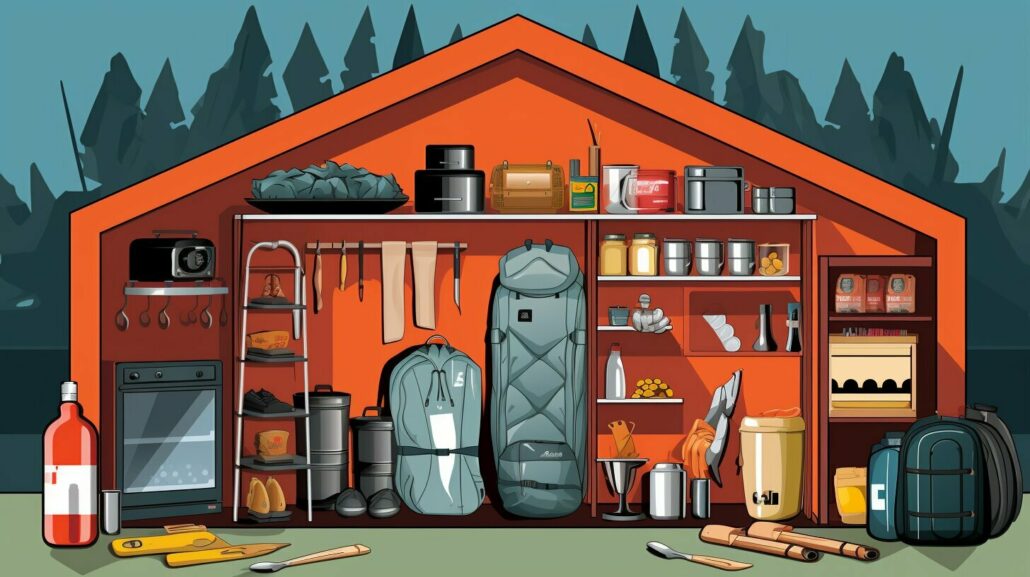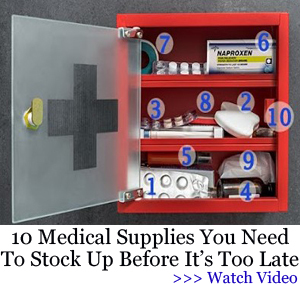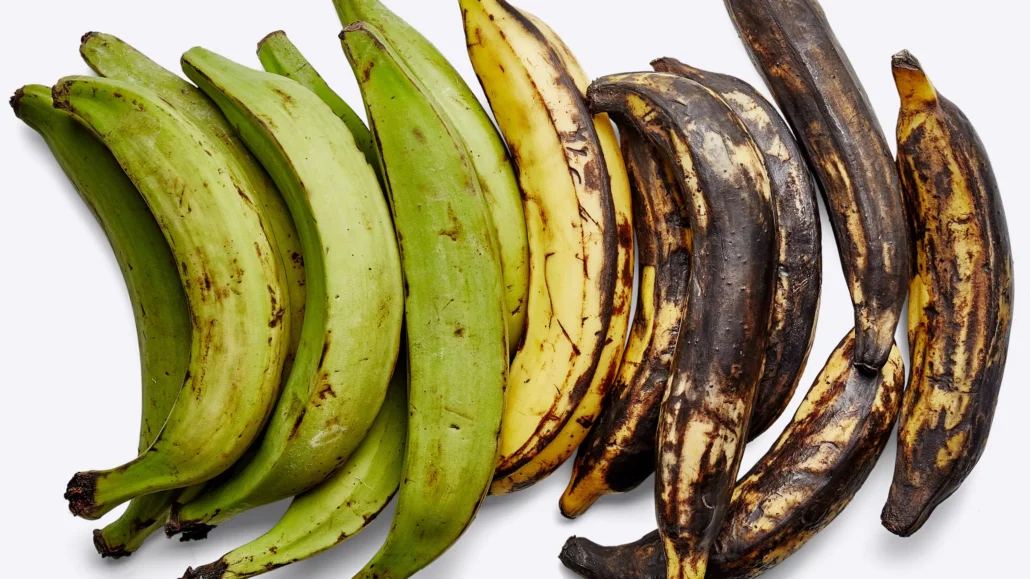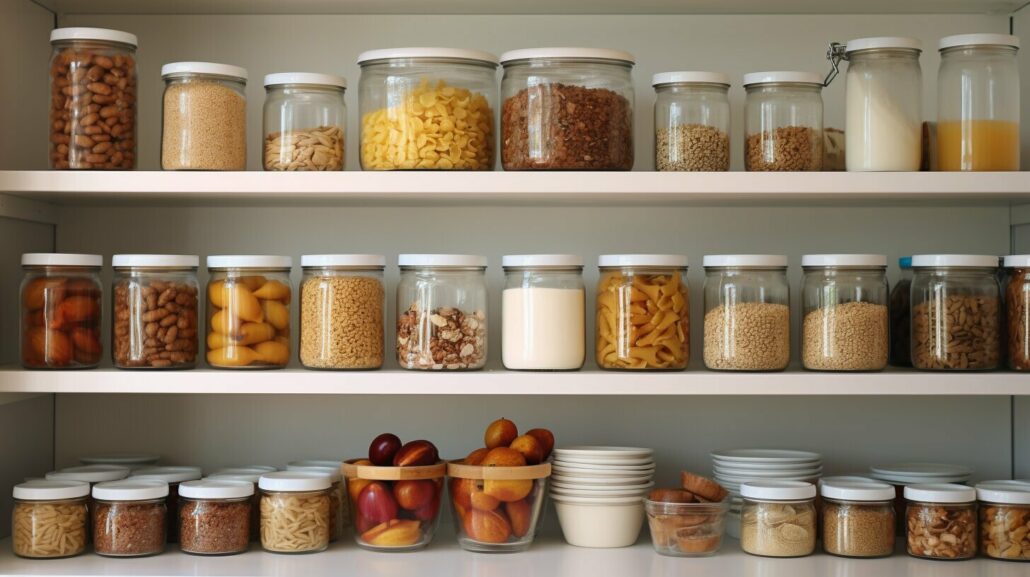Welcome to our comprehensive guide on prepping and emergency preparedness. In this article, we will provide you with insider tips on what to store to ensure your family’s safety during unexpected situations.
Takeaways:
- Buy a little extra food during every grocery trip, focusing on non-perishable items like canned foods, packaged foods, pantry snacks, water bottles, personal hygiene supplies, and paper products.
- Create 72-hour kits for each family member, including a change of clothes, basic toiletries, food items, water, first aid kit, hand warmers, flashlight, batteries, survival knife, mylar sleeping bag, tent, local maps, whistle, radio, dust mask, duct tape, toilet paper, moist towelettes, garbage bags, wrench/pliers, and money in small bills.
- Store camping supplies in one easily-accessible bin, including a tent, flashlights, lanterns, batteries, and camp stove.
- Purchase a solar power bank to charge electronic devices during power outages.
- Fill up the gas tank when it reaches half full to avoid shortages during emergencies.
You can but pretty much all of these items on Amazon these days.
Remember, being prepared is crucial in uncertain times. Stay tuned for more insider tips on prepping and emergency preparedness in the following sections of this article.
The Importance of Food Storage in Prepping
When it comes to prepping, one of the key aspects to consider is food storage. In this section, we will share valuable food storage tips, discuss essential long-term storage items, and offer some innovative pantry organization ideas.
Having an adequate supply of stored food is crucial for any emergency preparedness plan. It ensures that you and your family have access to nourishing meals during times of crisis or when regular food sources may be limited. To make the most of your food storage, consider the following tips:
- Rotate and replenish: Regularly rotate your stored food to maintain freshness. Use the oldest items first and replace them with new purchases. This practice ensures that your stockpile remains up-to-date and avoids wastage.
- Diversify your food choices: Aim for variety in your food storage. Include a mix of canned goods, freeze-dried meals, grains, legumes, and dehydrated fruits and vegetables. This diversity not only provides a balanced diet but also offers options for different palates and dietary restrictions.
- Consider long-term storage items: Some food items are more suitable for long-term storage than others. For example, grains, beans, rice, pasta, and dried herbs and spices can be stored for several years if properly sealed and stored in a cool, dry place. Focus on acquiring these items in bulk to ensure you have a sustainable food supply.
Pantry organization plays a vital role in efficient food storage. By keeping your pantry well-organized, you can easily locate and rotate items, minimize waste, and optimize the available space. Here are some innovative ideas to consider:
- Use clear storage containers: Transferring dry goods to clear, airtight containers not only helps retain freshness but also allows you to see the contents at a glance. Label each container with the item and expiration date for easy identification.
- Optimize vertical space: Utilize adjustable shelves or install wall-mounted racks to maximize vertical storage space in your pantry. This allows you to store more items without cluttering the shelves.
- Create an inventory system: Keep track of your food storage inventory by maintaining a digital or physical list. Regularly update it as you consume and replenish items to stay organized and avoid duplication.
By following these food storage tips and implementing innovative pantry organization ideas, you can ensure that you have a well-maintained and accessible food supply that will support you and your family during emergencies.
| Food Storage Tips | Long-Term Storage Items | Pantry Organization Ideas |
|---|---|---|
| Rotate and replenish | Grains, beans, rice, pasta | Use clear storage containers |
| Diversify your food choices | Dried herbs and spices | Optimize vertical space |
| Create an inventory system |
Building Your Emergency Supplies Kit
To be fully prepared for emergencies, it’s crucial to have a well-stocked emergency supplies kit. In this section, we will guide you through the essential prepping supplies you need to include in your kit, ensuring you are fully equipped to handle any situation.
First and foremost, stock up on non-perishable food items that will provide sustenance during an emergency. Canned foods, packaged foods, and pantry snacks are great choices. Make sure to include enough water bottles to last at least 72 hours, as well as personal hygiene supplies and paper products.
Next, create individual 72-hour kits for each family member. These kits should contain a change of clothes, basic toiletries, a first aid kit, hand warmers, a flashlight, batteries, a survival knife, a mylar sleeping bag, a tent, local maps, a whistle, a radio, a dust mask, duct tape, toilet paper, moist towelettes, garbage bags, and a wrench/pliers. It’s also a good idea to include some money in small bills in case access to banks and ATMs is limited.
Additionally, store your camping supplies in one easily-accessible bin. Include a tent, flashlights, lanterns, batteries, and a camp stove. These items will prove invaluable during extended power outages or when you need to evacuate to a temporary shelter. Have a look here at my ultimate bug out bag.
| Essential Prepping Supplies | Emergency Kit Essentials |
|---|---|
| Non-perishable food items (canned foods, packaged foods, pantry snacks) | Change of clothes |
| Water bottles | Basic toiletries |
| Personal hygiene supplies | First aid kit |
| Paper products | Hand warmers |
| Flashlight | |
| Batteries | |
| Survival knife | |
| Mylar sleeping bag | |
| Tent | |
| Local maps | |
| Whistle | |
| Radio | |
| Dust mask | |
| Duct tape | |
| Toilet paper | |
| Moist towelettes | |
| Garbage bags | |
| Wrench/pliers | |
| Money in small bills |
Finally, consider investing in a solar power bank to keep your electronic devices charged during power outages. This portable power source can be a lifesaver when communication is crucial. And don’t forget to keep your vehicle’s gas tank at least half full at all times. This prevents fuel shortages and ensures you have a means of transportation during emergencies.
By following these essential steps and including the recommended prepping supplies in your emergency kit, you’ll have peace of mind knowing that you are prepared for any situation that may come your way.
Stockpile Essentials: What to Store for Survival
Building a stockpile of essential items is a vital part of prepping. Here, we will explore the must-have stockpile essentials, with a specific focus on the best survival foods that can sustain you during extended emergencies.
When it comes to stockpiling food, it’s important to focus on items that have a long shelf life and provide the necessary nutrients to keep you energized. Canned foods are a great option, as they have a long expiration date and are easy to store. Some top choices include canned meats, vegetables, fruits, and soups. Additionally, consider stocking up on dried foods such as rice, pasta, beans, and oats, as they provide a good source of carbohydrates and can last for a long time.
Another key component of your stockpile should be non-perishable snacks that can provide quick energy boosts. These can include granola bars, nuts and seeds, dried fruits, and jerky. Don’t forget to have an ample supply of water, either in bottled form or through water purification methods.
Best Survival Foods
Here are some of the best survival foods to consider for your stockpile:
| Food Item | Benefits |
|---|---|
| Canned Tuna | High in protein and Omega-3 fatty acids |
| Peanut Butter | Rich in healthy fats and a good source of protein |
| Dried Beans | High in fiber and protein, with a long shelf life |
| Oats | Provide essential nutrients and can be used in various recipes |
| Canned Soup | A quick and easy option for warm meals |
| Dehydrated Vegetables | Retain nutrients and can be rehydrated for cooking |
Remember to regularly check and rotate your stockpile to ensure that the food remains fresh and usable. Being prepared with a well-stocked pantry can provide peace of mind and help you navigate through any emergency situation that comes your way.
Proper Storage Techniques for Long-Term Preparedness
Proper storage techniques are crucial when it comes to long-term preparedness. In this section, we will discuss the importance of storing your supplies correctly and provide you with valuable tips on how to maintain their quality over time.
When it comes to storing food for emergencies, it is essential to keep it in a cool and dry place. Avoid exposure to direct sunlight or extreme temperatures, as they can affect the shelf life of your goods. Consider using airtight containers, such as mason jars or food-grade buckets, to keep out moisture and pests.
Another important factor in proper storage is rotation. Make sure to regularly check the expiration dates on your canned and packaged foods and rotate them accordingly. Create a system that allows you to easily access and use the oldest items first. This helps to prevent food waste and ensures that you always have fresh supplies on hand.
Additionally, don’t forget to label and organize your storage areas. This will save you time and effort when you need to find specific items quickly. Consider using a system of shelves or bins to keep everything tidy and easily accessible. You can even create an inventory list to keep track of what you have and when items need to be replenished.
Finally, remember that proper storage techniques extend beyond just food. It is important to store other essential supplies, such as medical kits, batteries, and tools, in a safe and organized manner as well. By following these guidelines, you can ensure that your emergency supplies remain in good condition and ready to use when needed.
| Key Tips for Proper Storage Techniques |
|---|
| Keep supplies in a cool, dry place |
| Use airtight containers to prevent moisture and pests |
| Rotate food supplies regularly to avoid expiration |
| Label and organize storage areas for easy access |
Alternative Power Sources for Emergency Situations
When power outages occur, having alternative power sources becomes essential. In this section, we will discuss the benefits of using solar power banks and generators as reliable sources of energy during emergency situations.
Solar Power Banks:
Solar power banks have become increasingly popular in recent years, and for good reason. These portable devices harness the power of the sun to charge electronic devices such as smartphones, tablets, and even small appliances. With the ability to store energy from the sun, a solar power bank can provide a lifeline during a power outage, keeping you connected and powered up when traditional electricity is unavailable.
| Advantages of Solar Power Banks |
|---|
|
Generators:
Generators have long been a go-to solution for backup power during emergencies. These devices, typically powered by gas or propane, can provide a reliable source of electricity to keep essential appliances and devices running. From refrigerators and freezers to medical equipment and heating systems, generators offer peace of mind by ensuring that critical systems remain functional during power outages.
| Advantages of Generators |
|---|
|
When it comes to emergency preparedness, having alternative power sources on hand can make a significant difference in your ability to cope with unexpected situations. Whether you opt for a solar power bank to keep your devices charged or invest in a generator for a more extensive power backup, being equipped with these reliable sources of energy will ensure you can stay connected and comfortable during emergencies.
Ensuring Access to Clean Water
Access to clean water is vital for survival during emergencies, making long-term water storage a crucial aspect of prepping. In this section, we will explore different methods and containers for storing water to ensure your family’s hydration needs are met.
One of the simplest and most cost-effective methods of long-term water storage is to use food-grade plastic containers. These containers, such as large BPA-free water jugs or barrels, are designed to safely store water for extended periods. Make sure to thoroughly clean and sanitize the containers before filling them with water. It is recommended to use a water treatment solution or purification tablets to ensure the water remains safe to consume.
Table: Methods of Long-Term Water Storage
| Method | Advantages | Disadvantages |
|---|---|---|
| Food-grade Plastic Containers | Cost-effective, easy to find, and safe for storing water | May require space for multiple containers, not suitable for mobility |
| Water Storage Bags | Compact and portable, suitable for small spaces | Prone to punctures and leaks, may have a shorter lifespan |
| Rainwater Collection Systems | Utilizes natural resources, eco-friendly | Requires proper filtration and treatment, dependent on rainfall |
Remember to rotate your water supply every six months to prevent stagnation and ensure freshness. Label each container with the date of storage to keep track of rotation. Additionally, it is important to store water in a cool, dark place away from direct sunlight, as heat and light can degrade the quality of the water over time.
Aside from storing water, it is also crucial to have water purification methods in your emergency supplies. This may include water filters, purification tablets, or a portable water purification system. These methods can help remove impurities and make water safe for consumption, especially in situations where your stored water supply may become limited.
Conclusion
Ensuring access to clean water is a key component of emergency preparedness. By implementing long-term water storage methods and having reliable water purification options on hand, you can safeguard your family’s hydration needs during challenging times. Remember to regularly check and maintain your water storage containers to ensure they are in good condition, and always prioritize safety when storing and consuming water.
Essential Tools for Emergency Preparedness
Equipping yourself with essential tools is vital to navigate through emergency situations effectively. In this section, we will discuss the importance of a reliable survival knife and the versatility of wrenches and pliers in various emergency scenarios.
When it comes to survival, a reliable survival knife is an indispensable tool. Its sharp blade is essential for tasks such as cutting rope, preparing food, and building emergency shelters. Look for a knife with a durable stainless-steel blade and a comfortable grip to ensure ease of use, even in challenging conditions. Keep your survival knife in a secure sheath and within reach, as it will prove invaluable in times of need.
In addition to a survival knife, having a set of wrenches and pliers in your emergency kit is highly recommended. These versatile tools can help you tackle a wide range of situations, from fixing broken equipment to assembling makeshift repairs. Wrenches can be used for tightening or loosening bolts and nuts, while pliers come in handy for gripping and cutting wires. Choose a set that includes a variety of sizes to accommodate different needs.
| Suggested Tools | Uses |
|---|---|
| Survival Knife | Cutting, food preparation, shelter building |
| Wrenches and Pliers | Fixing broken equipment, assembling makeshift repairs |
During emergencies, having the right tools at your disposal can make all the difference. A reliable survival knife and a set of wrenches and pliers will help you tackle various tasks efficiently. Remember to keep these essential tools in a secure and easily accessible location within your emergency kit.
Mobility and Navigation: Preparedness on the Move
When it comes to emergency preparedness, mobility and navigation skills are essential. In this section, we will explore the significance of having accurate local maps to help you navigate unfamiliar territory during emergencies. Whether it’s a natural disaster or a sudden evacuation, having the ability to navigate your way to safety can make a world of difference.
During emergencies, roads may be blocked, landmarks may be damaged, and GPS signals may be unreliable. This is where local maps become invaluable. Local maps provide a tangible, reliable source of information that can guide you through alternate routes, safe zones, and essential resources. Unlike digital maps that rely on internet connectivity, local maps can be accessed anytime, anywhere, without the need for power or a stable network.
When choosing local maps for your emergency preparedness kit, look for detailed maps of your immediate area as well as neighboring regions. Highlight important landmarks, such as hospitals, police stations, evacuation centers, and supply distribution points. Familiarize yourself with the map’s symbols and legends so that you can interpret the information accurately and efficiently.
Table: Essential Items for Mobility and Navigation
| Item | Description |
|---|---|
| Local Maps | Detailed maps of your immediate area and neighboring regions. Highlight important landmarks. |
| Compass | A reliable compass for determining direction and orienting yourself. |
| Whistle | A whistle to signal for help and attract attention if needed. |
| Flashlight | A sturdy and reliable flashlight for navigating in low-light conditions. |
| Portable GPS Device | An optional addition for those who prefer digital navigation tools but ensure it is charged and has offline maps. |
Remember, having local maps is just one part of being prepared for emergencies. Practice using the maps, familiarize yourself with different routes, and communicate with your family or emergency contacts about your plans. By developing mobility and navigation skills and having the right tools at your disposal, you can increase your chances of staying safe and finding your way to safety during challenging times.
Prepping for Extreme Weather Conditions
Extreme weather conditions can pose unique challenges during emergencies, making it crucial to be adequately prepared. In this section, we will explore alternative heat sources and discuss the importance of having dust masks to protect yourself during severe weather events.
When faced with extreme cold temperatures, traditional heating systems may fail or become unavailable. That’s why it’s important to have alternative heat sources on hand. Consider investing in portable propane heaters or kerosene heaters, which can provide warmth in case of power outages or other heating system failures. Make sure to follow safety guidelines and keep these heaters well-ventilated.
Another option to consider is a wood-burning stove or fireplace. These can offer a reliable source of heat, especially if you have access to firewood. Remember to keep flammable materials away from the stove or fireplace and use them responsibly.
During severe weather events, dust and debris can become airborne, posing health risks. That’s why having dust masks is essential for protecting yourself and your family. N95 respirators are a popular choice as they filter out airborne particles, including dust, pollen, smoke, and other contaminants. Stock up on these masks and make sure they are readily available in your emergency supplies kit.
| Alternative Heat Sources | Dust Masks |
|---|---|
| Portable propane heaters | N95 respirators |
| Kerosene heaters | Protect against airborne particles |
| Wood-burning stove or fireplace | Ensure the safety and health of your family |
Being prepared for extreme weather conditions is essential for your safety and well-being. By having alternative heat sources and dust masks, you can navigate through challenging weather events more effectively. Remember to regularly check and maintain your emergency supplies kit, and stay informed about weather updates and evacuation protocols in your area. Stay safe!
Conclusion: Your Path to Emergency Preparedness
Congratulations on completing this comprehensive guide on prepping and emergency preparedness. In this final section, we will provide you with an emergency preparedness checklist to ensure you have covered all the essentials and are ready for any unexpected situations.
Emergency Preparedness Checklist
1. Stock up on non-perishable food items: Buy a little extra food during every grocery trip, focusing on canned foods, packaged foods, pantry snacks, water bottles, personal hygiene supplies, and paper products.
2. Create 72-hour emergency kits: Prepare individual kits for each family member, including a change of clothes, basic toiletries, food items, water, first aid kit, hand warmers, flashlight, batteries, survival knife, mylar sleeping bag, tent, local maps, whistle, radio, dust mask, duct tape, toilet paper, moist towelettes, garbage bags, wrench/pliers, and money in small bills.
3. Organize camping supplies: Store camping gear in one easily-accessible bin, including a tent, flashlights, lanterns, batteries, and a camp stove.
4. Invest in a solar power bank: Purchase a solar power bank to charge electronic devices during power outages and ensure you stay connected.
5. Keep your gas tank full: Fill up the gas tank when it reaches half full to avoid shortages during emergencies and ensure you can travel if needed.
6. Educate yourself about long-term water storage, alternative heat sources, and generators: Consider learning about long-term water storage options, alternative heat sources like firewood or propane, and generators to further enhance your emergency preparedness.
By following this emergency preparedness checklist, you can rest assured that you have taken the necessary steps to protect yourself and your loved ones in times of crisis. Remember, preparation is key, and being proactive now can make all the difference when an emergency arises.
FAQ
Q: What are some essential items to store for emergencies?
A: It is important to store non-perishable food items, water bottles, personal hygiene supplies, and paper products. Additionally, consider having a first aid kit, flashlights, batteries, a survival knife, mylar sleeping bag, tent, local maps, a radio, and cash in small bills.
Q: How can I ensure access to clean water during emergencies?
A: Long-term water storage is crucial. Consider learning about effective methods such as water purification tablets, water filters, and storing water in clean, food-grade containers. It is also smart to have a plan for rainwater collection and filtration.
Q: What alternative power sources can I rely on during a power outage?
A: Investing in a solar power bank is a great option to charge your electronic devices. You may also consider having a generator as a backup source of power. Just make sure to follow safety guidelines when operating generators.
Q: What are some essential tools for emergency preparedness?
A: It is important to have a survival knife for various tasks and a versatile tool like a wrench or pliers. These tools can be extremely helpful during emergencies and should be a part of your emergency supplies kit.
Q: How can I navigate and stay mobile during emergencies?
A: Having local maps is crucial for navigation during emergencies. Make sure to include them in your emergency supplies kit. Consider other items like a whistle, flashlight, and a dust mask to stay safe while on the move.
Q: How should I store food for long-term preparedness?
A: Focus on buying non-perishable items like canned foods, packaged foods, and pantry snacks. Make sure to rotate your food supplies regularly, using and replacing the oldest items first. Keep track of expiration dates and store items in cool, dry places.










